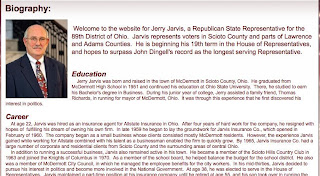
Our after school in-services have been placed in moth balls, but I was musing the other day about what topic I might choose if I were to present one tomorrow. The answer? Twitter. My AP students make Twitter jokes to me because they know I am a
slappy about it. But they, like most people who haven't engaged in "tweeting" don't get it. Since Oprah got with the program many "journalists", like Maureen
Dowd of the
Times and Mitch
Albom of
WJR have expressed bemusement by it. They don't get it either. Folks use it for many reasons, but I find that Twitter is wonderfully
adaptable to individual needs. It may not be for you, but if you are in education, I recommend trying this hot micro-messaging network for the following reasons:
* Twitter provides me with stimulating professional reading. After a month of refining who I
"followed" on Twitter, I filtered my stream to include a set of educators from around the world who were making great recommendations of blogs, articles, applications, etc. that have become about 95% of my professional reading. The more I filter this set (I cap "following" at 100), the better my information stream becomes.
*Twitter is a rich source of ideas. I could not post to this blog three times a week without Twitter. Since my network is so diverse, I am constantly exposed outside-the-box ideas that I could not be exposed to any other way. I have fun (or vent) on Facebook, but I learn much more through Twitter.
*Twitter is a way to connect with others who share your unique interests. I can tweet my Web 2.0 fascination out of my system on Twitter, and I am reassured by those I follow, that others out there who feel the same passion.
*Twitter is very low maintenance if you wish it to be. I check in on Twitter three or four times a day, but usually for brief intervals. The profile page is very limited and basic so there is little upkeep. It is a much less self-conscious style of interaction than Facebook.
*Twitter is less personal than
Facebook, so there are no social consequences for
unfollowing a person. (I only know about 5% of my Twitter friends personally). Most users don't select privacy settings, so you can "follow" another person without asking permission. And if someone follows you, there is no obligation to reciprocate.
*As I discussed in
"Back Channeling. . . .", Twitter is often used at conferences by attendees to communicate with each other about presentations, sometimes while they are under way. This is adding an entirely new dimension to these events.
*I am amazed by how often Twitter is first with the "news" of something big going on in the world or small going on in Web 2.0.
*Twitter is an easy way to float an idea to get feedback or develop an online audience. As I write, I am up to 95 followers. I tweet whenever I post a blog. Unsurprisingly, my blog readership has grown with my Twitter following (and they are the types of readers I want!).
*After you have acquired a following of your own, Twitter can be a great way to get a quick answer to question you may have. Suppose you were a history teacher who had networked with others like yourself. You could pose a quick question about a resource, method, or fact; and get instant answers in return.
If you decide to try it, be patient. Most folks find that it take 3 weeks or so to get a feel for it. The best way to network is to check out who the people with your interests are following and then follow them yourself.
I enjoy the jokes about Twitter and make plenty myself. But for me, it has been more than a passing fad. If you join follow me
@labcbakerThe Drive-thru will continue to publish on Monday,Wednesday, Friday for the rest of the school year.---------------------------------------
"Ode to Twitter...."
Flickr Creative Commons Photo by
Thomas Hawk
 As the end of the school year approaches I've been tempted to make lists of this or that, so why not go all out and make a 10 x 10 list?
As the end of the school year approaches I've been tempted to make lists of this or that, so why not go all out and make a 10 x 10 list?












